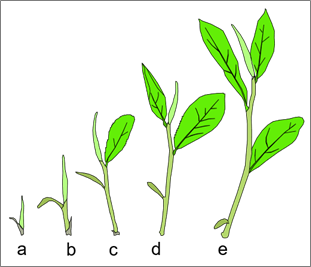Sri Lanka’s tea farmers have a deep, lifelong bond with the land. From the misty upcountry hills to the warm lowcountry plains, generations have nurtured Ceylon tea shrubs through every rain and sunshine. Yet even the most devoted planter can unintentionally disrupt the crop cycle and leave potential yield on the table. In Sri Lanka’s diverse growing zones (Upcountry, Midcountry, Lowcountry), each harvest and pruning decision matters. By understanding tea crop cycles in Sri Lanka and avoiding common pitfalls, growers can improve sustainable yields and tea quality. In this article, we’ll explore five mistakes in the tea cycle – from harvest timing to pruning schedules – and share practical, farm-friendly fixes backed by Sri Lankan tea experts.
1. Over-Pruning: Shortening the Bush’s Rest Period
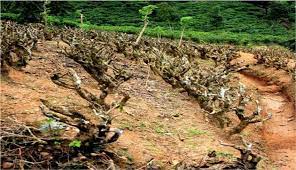
In an effort to boost early leaf growth, farmers sometimes prune tea bushes too soon or too hard. The mistake is chopping back the tea before it has enough stored leaf material. This can stunt new growth and trigger a long recovery period with little harvestable leaf. When the pruning cycle is too short, tea bushes go into shock and yield drops. In Sri Lanka, this is a critical issue: Tea Research Institute (TRI) guidelines warn that “undue shortening of cycles will lead to more non-productive periods (recovery after pruning)”. In practical terms, if you prune again before the bush has rebuilt its canopy, each bush produces fewer leaves overall.
- Consequences: A stunted harvest after pruning – often 3–6 months of very low yield – and weaker bushes long-term. Over-pruned bushes may have sparse foliage and require laborious re-growth.
- Practical Fix: Follow recommended pruning cycles and rest periods. In low-country estates, allow about 3 years between major prunings, while up- and midcountry fields can go 4–5 years between heavy pruning. Before you prune, let the bush recover its leaves: don’t prune immediately after a light plucking round. Instead, plan a short rest (letting one flush fully grow) just before pruning so that each bush has enough leaves to fuel regrowth. After pruning, give the field a light plucking round or two once new shoots reach 0.6–1.0 m. In short, “rest fields prior to pruning” as TRI recommends.
- Upcountry (cool climate): Tea grows more slowly, so follow a 4–5 year pruning cycle. Ensure bushes have built up a full canopy (about 0.6 m tall) before pruning.
- Midcountry: Aim for ~4-year cycles, adjusting slightly if weather is dry.
- Lowcountry (warm, wet): Faster growth means a 3-year cycle is typical. Wait until each bush has a strong flush before topping.
2. Irregular Plucking: Harvesting at the Wrong Rhythm
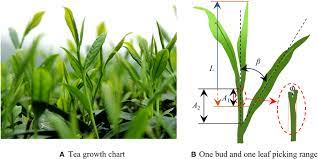
Tea must be picked “just right” – not too little, not too much. A common mistake is plucking incorrectly, either by cutting too deeply (hard plucking) or by harvesting too light (leaving too many old shoots). Both hurt the cycle. For example, plucking the bush to bare wood shocks the plant, while under-plucking (taking only one leaf and a bud instead of the full flush) leaves older leaves to feed pests and slows next growth.
- Consequences: Irregular plucking creates an uneven plucking table. After a heavy (“hard”) pluck, you’ll see gaps and banji shoots (dormant eyes) dominating – meaning a lower quality harvest and delayed next flush. If you pluck too softly, old leaves (arimbu) accumulate and crowd new growth, reducing overall yield. Over time, the bush produces smaller shoots or more waste leaf, and tea quality suffers.
- Practical Fixes: Standardize on “two leaves and a bud” (or TRI’s recommended bud + 3 leaves for full maturity) each round. In Sri Lanka, a full harvest should take the bud plus the next 3 leaves off each shoot, leaving the smaller “arimbu” shoots (bud + 2 leaves) for the next round. Make sure to remove any dormant banji shoots at every pluck – they don’t produce quality leaf and take energy from the bush. Then schedule plucking rounds frequently: don’t let the bush sit idle after it’s ready. Under Sri Lankan conditions (year-round rain and sun), tea plantations often support 40–50 harvest rounds per year. TRI explicitly advises “adopt shorter plucking rounds to improve tea yield, leaf standard and quality of made tea”.
- Labour tips: Train workers to pluck consistently at the right height. If mixed-age pickers are a problem, use visual guides (e.g. ropes or stakes) to keep the plucking table even across the field.
- Rainy vs dry season: In heavy rain (rush period), growth is fast – switch to the light “fish-leaf” pluck (remove even leaf+bud above the fish leaf) to maintain pace. In drier times, a normal bud+3 pluck works.
- Equipment: If available, use shears or harvesters set to the right height (0.6–0.9 m), so machine plucking mimics correct hand plucking.
3. Letting Weeds Take Over the Plucking Table
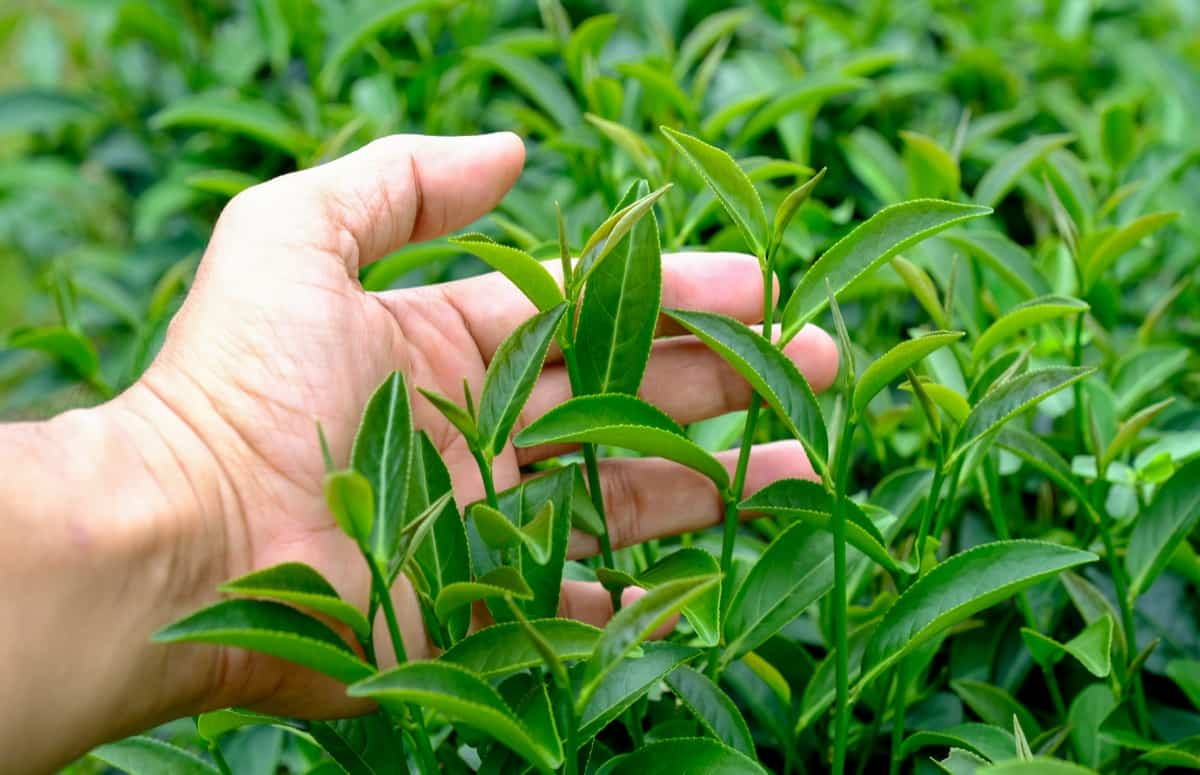
A surprisingly common mistake in tea fields is neglecting weeds and ground cover, especially on the plucking table. If grasses, ferns or other plants creep up to the tea canopy, they compete for sunlight, moisture and nutrients. Worse, weeds interfere directly with picking: once a weed covers the top, pluckers waste time snipping it or end up harvesting lower-quality shoots. Sri Lankan growers know that “once weeds invade and cover the surface of the plucking table, it will interfere with the plucking operations and quality of leaf harvested”, leading to poorer crop quality (and lower income).
- Consequences: Weeds reduce bush vigor and hamper harvest efficiency. Nutrients diverted to weeds mean less leaf production. Harvest quality drops as pluckers spend time removing weed foliage or end up including unwanted grasses in the pick. Over time, a weedy slope can yield far less tea per hectare and tarnish the traditional quality Ceylon leaf.
- Practical Fixes: Integrated weed management is key. After pruning or replanting, remove weeds thoroughly and then keep them out with cover crops and mulches. TRI guidelines advise: “Consolidate ground cover by infilling and planting of mana in vacant patches to suppress weed growth”. Mana (Mimosa pudica) is a leguminous cover often used on Sri Lankan estates – it grows densely and crowds out grasses without shading the tea. Alternatively, plant other low-cover species (e.g. paddy with fertiliser, velvet beans) between tea rows.
- Regular weeding: Schedule periodic weeding (manual or mechanical) before weeds get tall. Don’t wait until harvest time – nip weeds in the bud in between pruning cycles.
- Cover crops: In humid wet zones, fast-growing cover plants can smother weeds. In Uva or drier areas, mulching with tea prunings or grass cuttings keeps moisture in and weeds out.
- Monitor plucking table: After each round, immediately clear any weed that’s started to grow at the top of the bush. A quick pass with scissors saves hours later.
4. Neglecting Soil and Fertility Management

Tea thrives on careful nutrition. Some smallholders underestimate the soil needs of tea or apply fertilizer incorrectly. Mistakes include using only one kind of fertilizer, applying too little or too much, or ignoring soil pH. Over years, this can acidify or deplete the soil so that bushes struggle, even if harvested correctly.
- Consequences: Nutrient imbalances lead to weak plants, yellowing leaves, or poor-quality flushes. For example, low nitrogen stunts new shoots, while low potassium can reduce leaf size. Uncorrected soil acidity (common in heavy rainfall zones) limits nutrient uptake. In short, yields plateau or fall, and tea cup quality suffers.
- Practical Fixes: Follow a balanced fertility plan. Get your soil tested if possible. Apply fertilizers according to TRI’s integrated recommendations. For example: adjust pH with dolomite lime, use urea or ammonium sulfate before the main flush, add potassium, and maintain organic matter with compost or green manure. Use foliar feeding if needed, and tailor the mix to your region’s soil and climate.
5. One-Size-Fits-All Management Across Regions
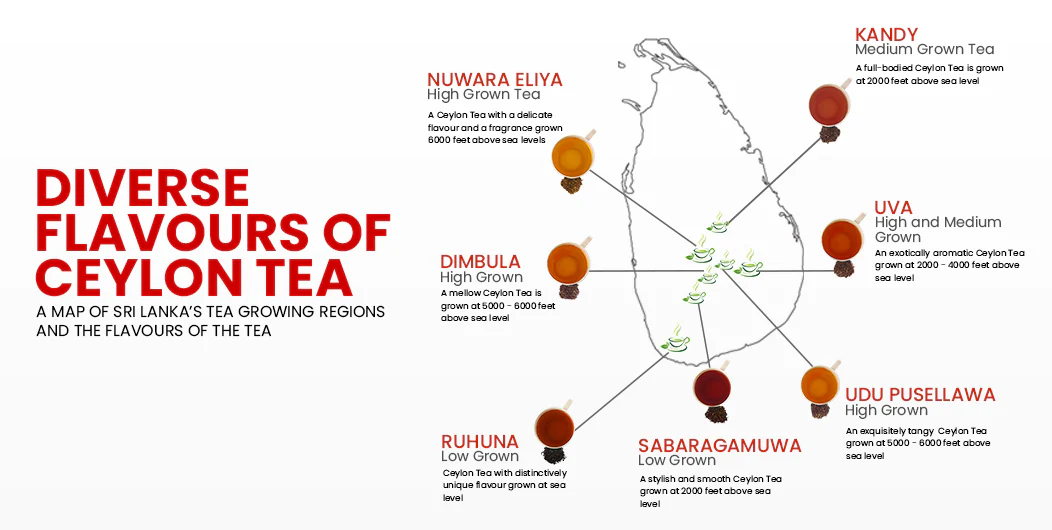
Sri Lanka’s tea zones (upcountry, midcountry, lowcountry, Uva) each have their own climate and terrain. A common mistake is using identical practices everywhere. For example, applying low-country pruning or plucking schedules on high-elevation tea fields can backfire – the slower-growth highlands need longer recovery. Conversely, what works in the moist south-western lowlands may fail in the drier Uva region.
- Consequences: Applying the wrong cycle leads to chronic under- or over-production. An upcountry estate that follows a low-country harvesting frequency may exhaust its bushes, while a low-country bush treated like an upcountry one may miss out on extra harvest opportunities. Inconsistent practices also confuse laborers and complicate training.
- Practical Fixes: Adapt practices to each region’s pace and climate. Follow region-specific cycles, adjust plucking rounds and fertilizer timing to local conditions, and consult local TRI advisories for zone-specific recommendations.
Conclusion
Managing tea crop cycles well is at the heart of sustainable yield and quality. By avoiding these five common mistakes – rushing pruning, inconsistent plucking, ignoring weeds, neglecting soil health, and using a one-size approach across regions – Sri Lankan growers can see real improvements in their harvest. Remember, each bush is a long-term investment: treat it to proper rest, harvest it steadily, feed it thoughtfully, and tailor care to its home. Tea Research Institute guidelines and local expertise are there to support you. Working together, farmers and field officers can keep Ceylon tea competitive and thriving. Let’s honor our tea gardens with the patience and knowledge they deserve.
- Key takeaways: 1) Prune at the right time and depth, 2) pluck consistently, 3) manage weeds, 4) maintain soil health, and 5) adapt practices to local conditions.
- Key resources: Open Ceylon’s training materials, Sri Lanka Tea Research Institute publications, and community forums for Sri Lankan planters. Remember, sharing knowledge helps all of Ceylon’s tea farms flourish.

